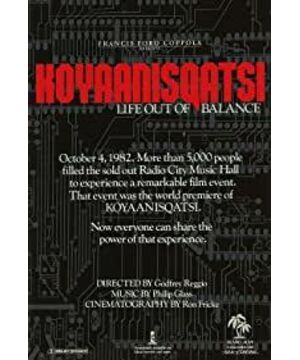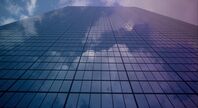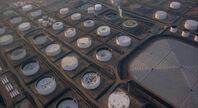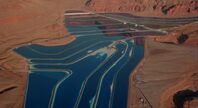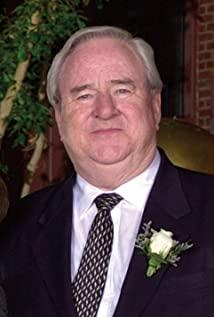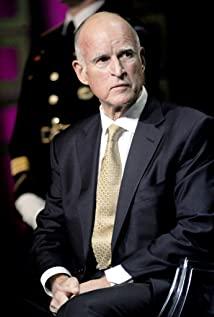whole movie, the information that the audience gets except the title of the movie is the audio-visual experience, there is no story without explanation, and everything is left to you to interpret. So I just talk about my own understanding. Of course, for this kind of unclear movie, a clear interpretation may be a very annoying spoiler, but it's just my family opinion.
The movie is divided into four parts, step by step talks about human civilization from 1. Coexisting with nature to 2. Pre-modernity (this word is edited by myself, meaning that there is a certain technology but the age of fear and doubt about technology ), to 3.Modernity (the era of large-scale production and consumption using technology), and finally to 4. Post-modernity (the era of wishing to lose self-doubt and be overwhelmed).
The first part starts from the beginning of the film to before the appearance of the tractor. This part of the picture is only natural without humans and man-made objects, symbolizing that humans were still an indivisible whole in nature before the development of science and technology. The whole picture and soundtrack are also slow and majestic, with a harmonious atmosphere.
The second part ranges from the emergence of tractors to the continuous blasting of man-made buildings. As mentioned above, this part of the overall feeling is a kind of suspicion and fear of mankind towards the power that mankind currently possesses. There are three arguments. One, the most direct is the pictures of ruins and dilapidated neighborhoods. They directly represent the destruction and negative effects that technology may bring. Second, many of the images in this part, especially the first part, are all "show off" to the existing technological capabilities of mankind: large factories, signal towers and pipelines to the sky, military weapons (nuclear bombs), and airplanes. (In the lens where the plane is approaching in the blur, the plane looks like a monster). Third, most of these lenses that "show off" technological capabilities are shot with ultra-telephoto lenses and the scenes are very tight. The ultra-telephoto compresses the space to create a sense of alienation, and the tightness of the picture makes the subject look huge and deterrent. This alienated and fearful lens language accurately expresses the emotions of doubt and fear.
The boundary between the third part and the fourth part is the most obvious: that is, the scene suddenly changes from fast to slow, because it changes from rush to slow. In this part, human beings begin to accept their own power and use it to start mass production and consumption. The tempo of the lens and the music gradually increase from normal at the beginning to the end. When the pace is slightly faster, the atmosphere I personally feel is optimism and hope: people enjoy the fruits of their abilities. However, as the rhythm of sound and painting gets faster and faster, the activities of the characters on the screen also get faster and faster. The optimism and hope just now have also become a kind of absurdity and ridicule, mocking the repetition of life as busy as a clockwork. This absurdity almost printed the loss afterwards on the screen. There is a metaphorical montage: the camera slides from the sausage strips from the machine down to the rows of people taking the elevator downstairs.
The fourth part is clearly the lost foretold. The ridiculously fast sound and picture rhythm and tight nerves suddenly relax, just like the perspective floating in the air in the picture. The sound and picture tempo slowed down, and the camera began to focus on people's confused and bewildered expressions, just as postmodern people began to doubt their society and era, and their uncertainty and anxiety about the future. In the end, the rocket exploded and fell as a direct metaphor for the failure of reality and the disillusionment of hope.
2.
I can watch this movie without knowing it at all. In the first part, I was almost desperate: although the pictures and sound were beautiful and expressive, I was extremely disappointed and bored before there were characters in the movie. As soon as someone appeared on the screen, my interest was immediately raised, as if the previous scenes suddenly had meaning. I think this phenomenon illustrates a question about us: "In the final analysis, we only care about ourselves." Because before seeing the characters, despite the richness of the pictures and sounds, we still don’t know how to project how empathy (what to project). on and who to identify with). To put it bluntly, we don’t have the ability to perceive emotions and information that have nothing to do with ourselves. Seeing the fourth part, I clearly knew that I was going to be lost here, and the language of the previous scenes did express the loss, but I couldn't confirm it before seeing the old man smoking. And as soon as I saw the old man's face, the feeling of being lost and hesitating was conveyed in an instant. Therefore, our ability to understand the world/movie emotionally is really based on understanding the characters. If there are no other people (the same kind), our emotions will have no place to stay.
3.
A small discovery: the conversion between each part (except between the third and fourth parts) is almost done with explosions. This is a good interpretation: explosion is destruction, and the advent of a new stage of civilization always means the destruction of old civilization.
4.
Finally, I must mention that film photography is really beautiful. But what is even more amazing is that the film director sees the entire human civilization now with a pattern of eternal civilization, which is rarer than the beauty of photography.
5.
KOYAANISQATSI:
ko·yaa·nis·qasti (from the Hopi language), n.
1. crazy life. 2. life in turmoil. 3. life out of balance. 4. life disintegrating. 5. a state of life that calls for another way of living.
View more about Koyaanisqatsi reviews


